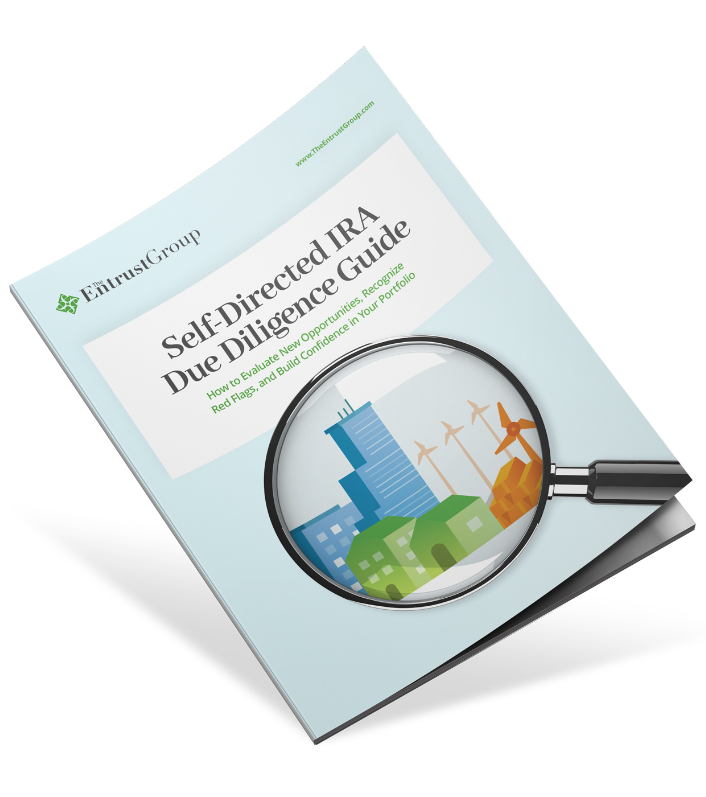TVPI vs MOIC: Essential Metrics for Private Equity Investors

Estimated reading time: 6 minutes
In recent years, private equity has emerged as a powerful asset class, with returns often outpacing those of traditional public market investments. Given the substantial capital involved and the intricate nature of private equity investments, understanding performance metrics is crucial for investors aiming to maximize their returns.
To accurately assess investment success, private equity investors rely on specific performance metrics. Among these, total value paid in (TVPI) and multiple on invested capital (MOIC) stand out as fundamental metrics, providing essential insights into the overall performance and profitability of private equity investments.
In this article, we will delve into the intricacies of TVPI and MOIC. We aim to explain these metrics in-depth, highlight their importance, and illustrate how they can be used effectively to evaluate private equity investments.
_______________
KEY TAKEAWAYS
TVPI (total value paid in) is a metric that includes both distributed capital (realized returns) and unrealized value (remaining value in the investment).
- MOIC (multiple on invested capital) focuses solely on realized returns, calculated by dividing the total value by the invested capital.
- TVPI is useful for ongoing assessment and understanding potential future returns, while MOIC is ideal for evaluating final returns and overall investment success post-exit.
- Using both TVPI and MOIC together can provide a fuller picture of investment performance, offering insights into both ongoing potential and realized success.
_______________
Table of Contents
- What is Total Value Paid In (TVPI)?
- What is Multiple on Invested Capital (MOIC)?
- Key Differences Between TVPI and MOIC
- Explore More Private Equity Valuation Strategies
What is Total Value Paid In (TVPI)?
Total Value Paid In (TVPI) is a key performance metric used in private equity to evaluate the overall value generated by an investment relative to the capital invested. It encompasses two main components: distributed capital and unrealized value.
- Distributed Capital: This refers to the total amount of capital that has been returned to investors through dividends, interest, or capital gains from the investment.
- Unrealized Value: This represents the current estimated value of the investment that has not yet been realized through sale or exit.
Together, these components provide a comprehensive view of both the actual and potential returns on an investment.
TVPI Formula
The formula for calculating TVPI is:
TVPI = (Distributed Capital + Unrealized Value) / Paid-In Capital
Where:
- Distributed Capital is the total amount returned to investors.
- Unrealized Value is the current estimated value of the remaining investment.
- Paid-In Capital is the total amount of capital invested by the investors.
TVPI is a powerful metric because it combines both the realized and unrealized aspects of an investment’s value. Here’s how to interpret different TVPI values:
- TVPI > 1: Indicates positive returns. The investment has generated more value than the initial capital invested.
- TVPI = 1: Indicates breakeven. The investment’s current value is equal to the initial capital invested.
- TVPI < 1: Indicates a loss. The investment has generated less value than the initial capital invested.
For instance, a TVPI of 1.5 means that for every dollar invested, the investor has gained $1.50 in total value, combining both distributed returns and the current estimated value of the remaining investment.
Real-World Example of TVPI
Consider a private equity fund that has invested $10 million in various portfolio companies. Over the investment period, the fund has distributed $6 million back to investors through dividends and exits. The current unrealized value of the remaining investments is estimated at $8 million.
Using the TVPI formula:
TVPI = ($6 million + $8 million) / $10 million
TVPI = $14 million / $10 million
TVPI = 1.4
This TVPI of 1.4 indicates that the fund has generated a total value of $1.40 for every dollar invested, signifying a positive return on investment.
Benefits of TVPI
There are two primary benefits of total value paid-in:
- Comprehensive Performance View: TVPI offers a holistic view of an investment’s performance by combining both realized and unrealized returns. This makes it a more comprehensive metric compared to those that only consider realized returns.
- Ongoing Assessment Utility: TVPI is useful for ongoing assessment of an investment’s performance. Investors can track changes in TVPI over time to understand how the value of their investment is evolving, even before a full exit is achieved. This dynamic insight can inform investment decisions and strategies.
By integrating both distributed and unrealized values, TVPI provides investors with a nuanced understanding of their private equity investments’ total value creation, allowing for more informed decision-making and strategic planning.
What is Multiple on Invested Capital (MOIC)?
Multiple on invested capital is a key performance metric in private equity that focuses on the total return on investment by comparing the total value of an investment to the original capital invested. Unlike TVPI, which includes both realized and unrealized returns, MOIC typically centers on realized returns, making it a straightforward measure of an investment’s profitability.
MOIC Formula
The formula for calculating MOIC is:
MOIC = Total Value / Invested Capital
Where:
- Total Value is the sum of the realized returns from the investment.
- Invested Capital is the initial amount of capital invested.
MOIC is a simple yet powerful metric for understanding the profitability of an investment. Here’s how to interpret different MOIC values:
- MOIC > 1: Indicates a profitable investment. The investment has generated more value than the initial capital invested.
- MOIC = 1: Indicates a breakeven point. The investment’s returns are equal to the initial capital invested.
- MOIC < 1: Indicates a loss. The investment has generated less value than the initial capital invested.
For instance, a MOIC of 2.0 means that for every dollar invested, the investor has received $2 in total value, effectively doubling their initial investment.
MOIC Real-World Example
Consider a private equity firm that invests $5 million in a portfolio company. Over the course of the investment, the firm successfully exits the investment by selling it for a total of $15 million.
Calculating MOIC is simple:
MOIC = $15 million / $5 million
MOIC = 3.0
This MOIC of 3.0 indicates that the firm has tripled its initial investment, generating $3 for every dollar invested.
Benefits of MOIC
Here are a couple of the benefits of MOIC:
- Simplicity and Clarity: MOIC is a straightforward metric that provides a clear picture of an investment’s profitability. It is easy to calculate and understand, making it accessible for investors to quickly gauge the success of their investments.
- End-of-Lifecycle Assessment: MOIC is particularly useful at the end of an investment’s lifecycle, as it focuses on realized returns. It provides a definitive measure of the total value generated by the investment, which is crucial for assessing the overall success of the investment strategy.
By using MOIC, investors can gain a clear and concise understanding of their investment’s performance, allowing for better-informed decisions and more effective investment strategies.
Key Differences Between TVPI and MOIC
One of the primary differences between TVPI and MOIC is the inclusion of unrealized value. TVPI includes both realized returns (distributed capital) and unrealized returns (the remaining value of the investment that has not yet been liquidated). This comprehensive approach provides a snapshot of the total potential value of the investment at any given point in time.
In contrast, MOIC focuses solely on realized returns, ignoring any potential future value. This makes MOIC a straightforward measure of what has already been achieved rather than what might be achieved in the future.
TVPI is particularly useful for ongoing assessment of an investment’s performance. Since it includes both realized and unrealized values, it helps investors understand the current status and potential future performance of their investment. This ongoing perspective is valuable for making mid-course adjustments and strategic decisions.
MOIC, on the other hand, is typically used at the end of an investment’s lifecycle to assess final returns. It provides a clear and definitive measure of the total value generated from the invested capital, making it an ideal metric for evaluating the ultimate success of the investment.
How to Use TVPI and MOIC Together
Using TVPI and MOIC together can provide a fuller picture of investment performance.
- TVPI offers insights into both current and potential future returns, helping investors understand the complete value trajectory of their investments. This is particularly useful for monitoring ongoing investments and making strategic decisions.
- MOIC gives a clear snapshot of realized returns, providing a definitive measure of success once the investment is fully exited. This is crucial for evaluating the overall effectiveness of an investment strategy.
By combining these metrics, investors can gain a nuanced understanding of both the interim performance and the final outcome of their investments. This holistic view can enhance decision-making processes, allowing for better portfolio management and more strategic planning.
Explore More Private Equity Valuation Strategies
TVPI and MOIC are two of the most valuable metrics for private equity investors. By using both metrics together, you can achieve a more complete and nuanced understanding of investment performance, ultimately leading to more informed and strategic investment decisions.
Understanding these metrics is essential, but equally important is the due diligence process that precedes any private equity investment. Thorough due diligence helps investors mitigate risks, uncover potential red flags, and make informed decisions that align with their financial goals.
To assist you in your due diligence efforts, download our Due Diligence Guide. This guide provides you with detailed checklists, valuation strategies, and red flags to watch for, giving you the information you need to navigate the complexities of private equity investing.

Self-Directed IRA Due Diligence Guide
And if you’d like to reduce capital gains taxes on the profits from your private equity investments, consider a self-directed IRA (SDIRA).
These accounts offer all the same tax advantages of an IRA from a bank or brokerage with one massive added benefit – rather than being limited to publicly traded securities, you’re able to invest in alternative assets like real estate, promissory notes, and of course, private equity.



























0 Comment